Every so often I run into someone with a Roseland past who share something with me in the last 15 years: an item, a name, a connection or a story. Then the conversation centers on what I did with what was shared with me. Many of the stories that were shared with me became parts of columns I have written.
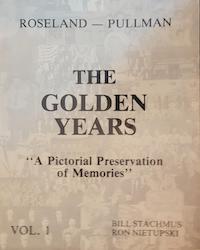 In many cases, the items end up on two entire bookshelves overflowing with Roseland, Pullman and Kensington memorabilia. The second bookcase is a recent addition that allowed me to display the sets of Pullman dishes and blankets and a Pullman porter cap that was contributed by Jeanne and Lou Raffin along with many other items I’ve more recently received.
In many cases, the items end up on two entire bookshelves overflowing with Roseland, Pullman and Kensington memorabilia. The second bookcase is a recent addition that allowed me to display the sets of Pullman dishes and blankets and a Pullman porter cap that was contributed by Jeanne and Lou Raffin along with many other items I’ve more recently received.
In addition to those two bookshelves, I have another smaller bookcase with about thirty yearbooks from Pullman Tech, Fenger, Mendel, Chicago Vocational School, St. Willibrord, and St. Louis Academy, along with my own from Sacred Heart Seminary. I also have stacks of the Fenger Titan Torch, Pullman Standard newsletters, Roseland Operetta Club librettos, St. Anthony of Padua dedication books, special celebration photo books and other booklets The photo books are of great interest because they have family photos of parishioners from back in the day.
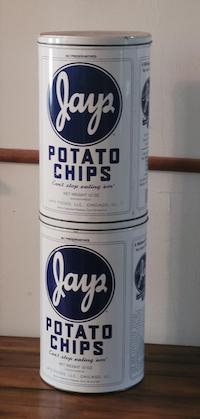 Some of the original artifacts that have been donated to my Roseland Collection Display include two original JAY’s Potato Chip cans; an electric drill from the Pullman factories; display plates celebrating Pullman’s history; a book of photos taken in the 19th century along with a handwritten note about a family moving into Pullman before sidewalks were completed; a trophy from one of the last Holy Name bowling teams; the official lamp, meeting bell and card tables of the American Legion Unit of Post #49; and the corporate records of the Piemontese Women’s Club.
Some of the original artifacts that have been donated to my Roseland Collection Display include two original JAY’s Potato Chip cans; an electric drill from the Pullman factories; display plates celebrating Pullman’s history; a book of photos taken in the 19th century along with a handwritten note about a family moving into Pullman before sidewalks were completed; a trophy from one of the last Holy Name bowling teams; the official lamp, meeting bell and card tables of the American Legion Unit of Post #49; and the corporate records of the Piemontese Women’s Club.
I also have many small booklets from dinners hosted by various organizations, like the Roseland-Pullman Area Sports Hall of Fame Dinner, Società Filarmonica Bella Italia, Roseland Little League, Tornado’s Athletic Club, and Roseland Operetta Club.
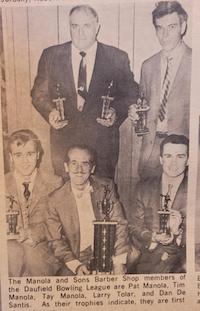 I have a copy of “Roseland-Pullman — the Golden Years: A Pictorial Preservation of Memories.” Volume 1. There is a Volume 2, but I don’t have one in my collection at this time. It is a great book of Roseland photos from before the 1980s. I do know that the Riverdale Library has s copy of both volumes available as reference books — not to be borrowed.
I have a copy of “Roseland-Pullman — the Golden Years: A Pictorial Preservation of Memories.” Volume 1. There is a Volume 2, but I don’t have one in my collection at this time. It is a great book of Roseland photos from before the 1980s. I do know that the Riverdale Library has s copy of both volumes available as reference books — not to be borrowed.
I also have seven out of nine copies of the Calumet Index Annuals. Each of the issues was dedicated to a different topic. The one I’ve pictured from 1970 was all about Roseland sports teams. The Manola Barber Shop team is pictured because I lived up the street and many of my neighbors got their hair cut there and knew the Manola family. These annuals have pages of advertisements from back in the ’60s and ’70s that atteest to some of the stories Roselandites like to quote. My favorite is the Liberty Bakery Atomic Cake, for which there is an ad but also an article describing how the Atomic Cake came into being.
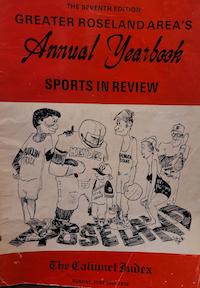 I also have a number of books on George Pullman and the Pullman community. I based my one-man show of George Pullman on the Buder book, “Pullman: An experiment in industrial order and community planning, 1880-1930.” Another set of books I have that aren’t old but definitely have relevance to Pullman are Robert Zemeckis’ “Polar Express” and “The Art of the Polar Express.” You might wonder what they have to do with Pullman, and you may be surprised by the facts.
I also have a number of books on George Pullman and the Pullman community. I based my one-man show of George Pullman on the Buder book, “Pullman: An experiment in industrial order and community planning, 1880-1930.” Another set of books I have that aren’t old but definitely have relevance to Pullman are Robert Zemeckis’ “Polar Express” and “The Art of the Polar Express.” You might wonder what they have to do with Pullman, and you may be surprised by the facts.
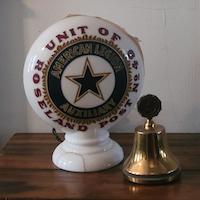 The story is that Robert Zemeckis’ lived at 11344 Edbrooke and his grandparents lived in Pullman. Mr. Zemeckis spent a lot of time visiting his grandparents in Pullman while growing up. In his later years, while he was creating “The Polar Express,” he brought his family to Chicago on a bus tour through Roseland and Pullman. That is how it came to be that Pullman is the basis for much of the story illustration.
The story is that Robert Zemeckis’ lived at 11344 Edbrooke and his grandparents lived in Pullman. Mr. Zemeckis spent a lot of time visiting his grandparents in Pullman while growing up. In his later years, while he was creating “The Polar Express,” he brought his family to Chicago on a bus tour through Roseland and Pullman. That is how it came to be that Pullman is the basis for much of the story illustration.
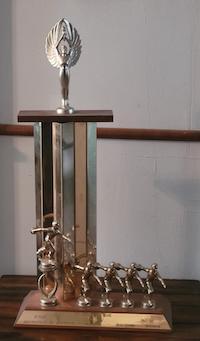 “The Art of the Polar Express” shows, in pictures and drawings, how the North Pole in the story had its beginnings in our red brick Market Hall with its colonnades. The Pullman Factory itself is used as the basis for Santa’s toy making factory. The address of the house for the little boy in the movie, 11344, is Zemeckis’ real address on Edbrooke. The house depicted in the movie is the house two doors up from the Zemeckis house because it better served the illustration purposes.
“The Art of the Polar Express” shows, in pictures and drawings, how the North Pole in the story had its beginnings in our red brick Market Hall with its colonnades. The Pullman Factory itself is used as the basis for Santa’s toy making factory. The address of the house for the little boy in the movie, 11344, is Zemeckis’ real address on Edbrooke. The house depicted in the movie is the house two doors up from the Zemeckis house because it better served the illustration purposes.
The Roseland Collection Display I have is just that: a display for anyone who comes to Pullman to stop by and have a look. I have many print materials that I don’t display because they are single items or in delicate condition, but they are also available for viewing by anyone who wishes to visit my home. Prior notice is helpful, but not necessary as I understand that some people find themselves near Pullman and decided they might as well check out the old neighborhood. Consider this your invitation to stop by and see the Roseland Collection Display and maybe, we can grab a cup of coffee at Pullman Coffee Club while we stroll through Pullman.
My book “Petals from Roseland: Fond Memories of Chicago’s Roseland, Pullman and Kensington Neighborhoods” has sold more than 800 copies since it became available. Copies are available from me at $20 + $5 s&h. Contact me at petalsfromroseland@gmail.com or 11403 S. St. Lawrence Ave., Chicago, Ill. 60628; res: 773-701-6756. My book is also available at D & D Foods, 1023 S. Halsted, Chicago Heights, at Bookie’s New and Used Books, 10324 S. Western Ave, Chicago and at Miles Books, 2819 Jewett Ave., Highland, Indiana.
 Fra Noi Embrace Your Inner Italian
Fra Noi Embrace Your Inner Italian


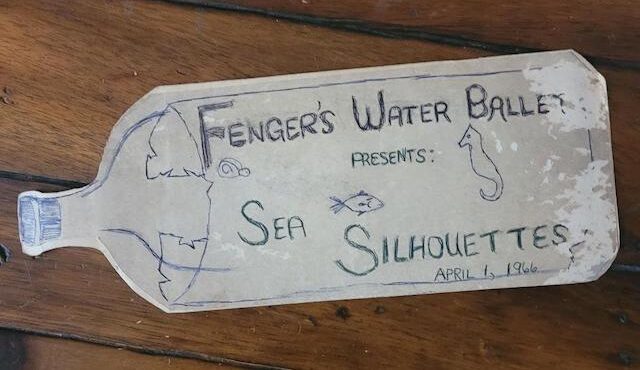





Great article. Sorry I read it so late. Best to you CJ. Gene Marchetti